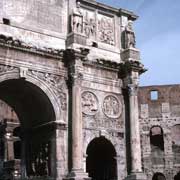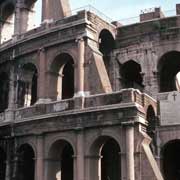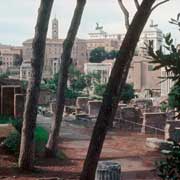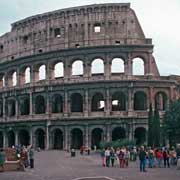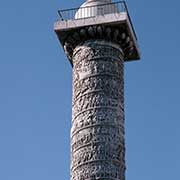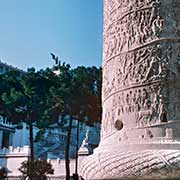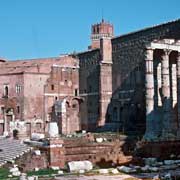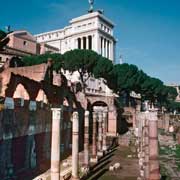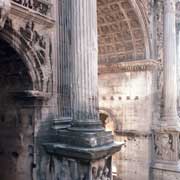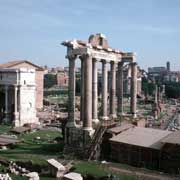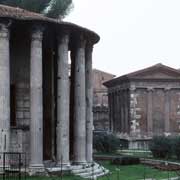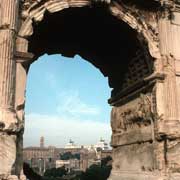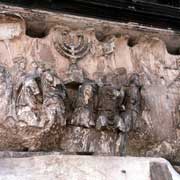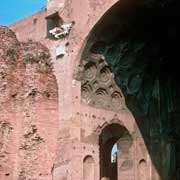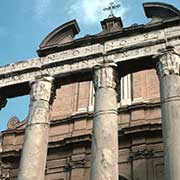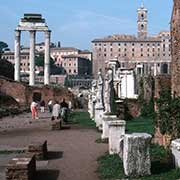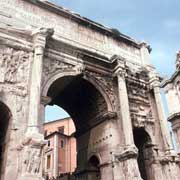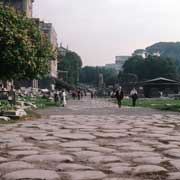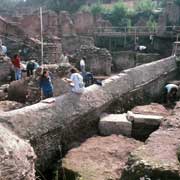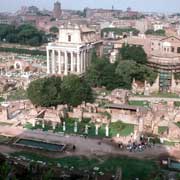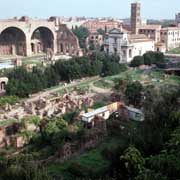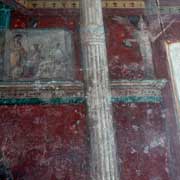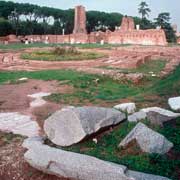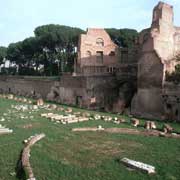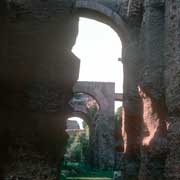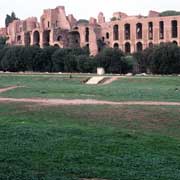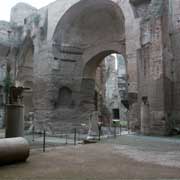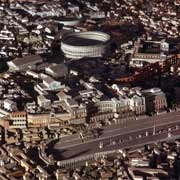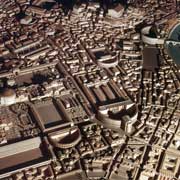Photos of Imperial Rome, past glory, Italy
Imperial Rome, past glory
The Latins people, the first known settlers of ancient Rome, lived on Palatine Hill and its surroundings. Around 600 BCE, Rome and the other towns in Latium, as that region was then called, came under the control of the Etruscans, a people originally from Asia Minor, who lived north of Latium. The Etruscans, a people with an advanced civilisation, built roads, temples, and public buildings, promoted trade and transformed Rome from a village of farmers and shepherds into a prosperous city.
you may then send it as a postcard if you wish.
In 509 BCE, the Latin people overthrew the Etruscan monarchy and established the Roman Republic. By 396 BCE Rome had become the largest city in Latium and offered protection and certain privileges of Roman citizenship to the towns it conquered, in return for its men joining the army. Rome ruled most of the Italian Peninsula by 275 BCE. Extending overseas made Rome a mighty empire during the 200s and 100s BCE, conquering Spain and North Africa and expanding into Asia Minor.
But, although the Romans had triumphed overseas, they faced growing discontent at home. Revolts by Rome’s Italian allies, a war in Asia, and unrest at home weakened the republic. In 82 BCE, the Roman general Lucius Sulla became dictator. After more conquests in the Middle East and the subjugation of the Gauls in the 50s BCE, Julius Caesar eventually prevailed over his rivals and by 45 BCE, he had become sole ruler of the Roman world. However, a group of aristocrats who hoped to revive the Roman Republic assassinated him in 44 BCE.
Civil war again broke out after Caesar’s death. In 43 BCE, Caesar’s adopted son and heir, Octavian, conquered Egypt after internal battles with his rivals and eventually became the unchallenged Roman world leader. In 27 BCE, he became the first Roman emperor and took the name Augustus, meaning exalted. The reign of Augustus marked the beginning of a long period of stability, which became known as the Pax Romana (Roman Peace), lasting about 200 years. Trade flourished, and art and literature reached a high point during what has been called the Augustan Age. In 43 CE, Emperor Claudius invaded Britain, and Trajan seized Dacia (now part of Hungary and Romania) in 106. The Roman emperors’ power gradually grew stronger, and worshipping the emperor as a god after his death provided a common base of loyalty among the empire’s peoples’ many different religions and traditions.
The Roman Empire reached its height of power and prosperity during the reign of the Antonines, from 96 to 180 CE. However, after that, there was a growing internal disorder. Many emperors seized power by force: from 235 to 284, 60 men were proclaimed emperors. The men were mostly army commanders whose troops named them emperor. Barbarian tribes from the north also attacked the country: the Goths, a Germanic people, invaded Roman territory many times during the 200s, and the Persians overran Mesopotamia and Syria. Diocletian, a Roman general, was proclaimed emperor by his troops in 284 and to restore order, he divided the provinces into two smaller units, with its government and army.
Christians suffered severe persecution during the 200s, with many Romans blaming them for causing the problems of that time by offending the traditional Roman gods. In 303, Diocletian forbade Christian worship. Constantine I was named emperor of Rome’s western provinces in 306 and had defeated his principal rival in a battle in 312. He claimed having had a vision that promised victory if he fought under the sign of the cross; he granted the Christians freedom of worship and became the first Christian emperor. In 330, he moved his capital to Byzantium in the east, renaming it Constantinople (now İstanbul in Turkey). By the late 300s, the empire was permanently split into the West Roman Empire and the East Roman Empire.
The West Roman Empire grew steadily weaker. Vandals, Visigoths, and other Germanic peoples invaded Spain, Gaul, and northern Africa, and in 410, the Visigoths looted Rome. The empire’s fall is often dated 476 when the Germanic chieftain Odoacer forced Romulus Augustulus, the last ruler of the empire, from the throne. Germanic chiefs had already begun to carve up the empire into several kingdoms. The East Roman Empire survived as the Byzantine Empire until 1453 when the Turks captured Constantinople.
Today, the ruins of ancient buildings cover most of the Aventine, Caelian, and Palatine hills. After centuries of neglect and looting, a lot of restoration work has uncovered many remains of buildings. One building still stands fully preserved: the Pantheon. But everywhere in this city, the Roman Empire is literally underneath your feet.



